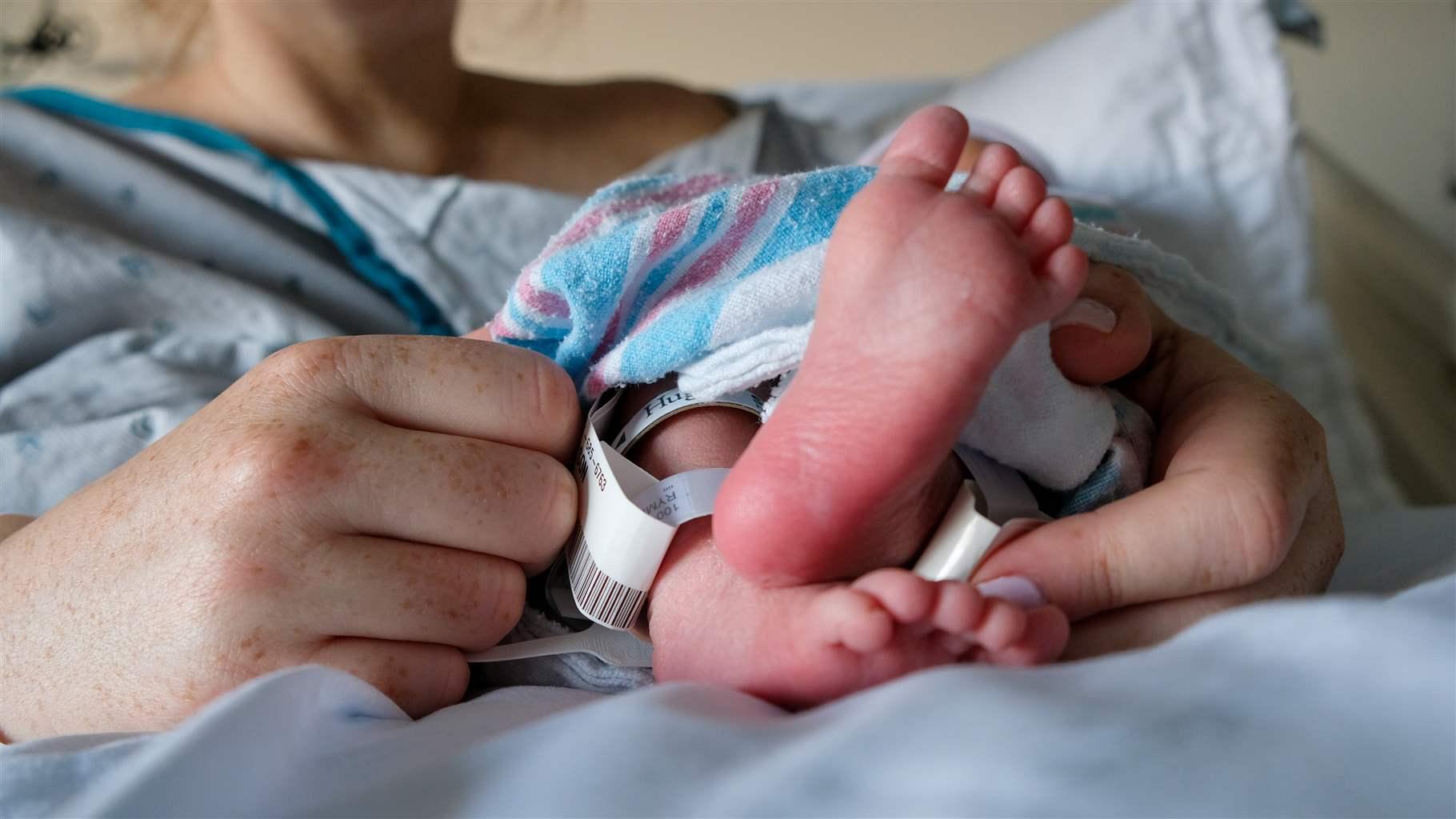Pregnant and Postpartum People Continue to Encounter Barriers to Opioid Use Disorder Treatment
Public health expert discusses challenges for this population and best practices correctional facilities can adopt

Carolyn Sufrin, A.M., M.D., Ph.D. is an assistant professor in the department of gynecology and obstetrics at Johns Hopkins University School of Medicine and of health, behavior, and society at the Johns Hopkins Bloomberg School of Public Health. Her research focuses on reproductive health care for incarcerated women. She’s also the director of Advocacy and Research on Reproductive Wellness in Incarcerated People, serves on the board of the National Commission on Correctional Health Care, and is a fellow of the American College of Obstetricians and Gynecologists and the Society of Family Planning.
This interview has been edited for length and clarity.
Q: What challenges do correctional facilities face with pregnant and postpartum patients with opioid use disorder, or OUD?
A: In our research, a quarter of pregnant people admitted to the prisons we surveyed nationwide had OUD, yet only 18% of the state prison systems said they initiate medication treatment for pregnant people. One study of 53 jails found that nearly half don’t offer medication treatment even when the person was on the medication pre-incarceration, so the patients experience withdrawal when incarcerated. That’s risky in pregnancy, because withdrawal increases the risk of relapse and overdose, and untreated OUD can lead to preterm birth and stillbirths, among other things.
Q: What about the cases where correctional facilities do provide pregnant and postpartum patients with medication for OUD?
A: Even if a prison or jail provides medication for opioid use disorder, or MOUD, to pregnant people, the majority of the facilities will discontinue treatment post-birth. Considering that opioid overdoses have become a major contributor to postpartum mortality in the last several years, ensuring continuity of medication treatment is critical.
Q: And when pregnant and postpartum patients with OUD are released from incarceration and re-enter the community?
A: While ensuring access to treatment while these patients are in custody is the first step toward a continuity of treatment upon their release, there are more barriers outside the correctional facility. For example, courts aren’t always aware of the benefit of medication treatment and may order pregnant and postpartum people to stop taking it. This is particularly problematic for pregnant and parenting people with child protective services involvement in their lives, because family courts may unnecessarily remove children from parental custody because a parent is on MOUD.
Q: What other barriers do pregnant and postpartum patients with OUD come up against when they re-enter the community?
A: Unpredictable release timing can make it difficult to receive the next day’s medication dose. Some communities don’t have an opioid treatment provider—or have one that doesn’t treat pregnant people. Lack of child care can make it difficult to pick up medication or attend group sessions. As with nonpregnant people, getting back on Medicaid for health insurance coverage can be a challenge. Lastly, securing housing is a challenge, because not all supportive housing units accept pregnant people or people with children.
Q: What are some re-entry best practices for this population?
A: Generally, good practices include discharge planning ahead of time and recognizing the unique needs of pregnant people. Programs should have a patient navigator who has community connections specific to pregnancy and provide support for securing prenatal care, transferring medical records, and finding safe housing.
Q: Are there examples of approaches that work?
A: We’re seeing them across the country. University of Kentucky researchers are partnering with opioid treatment providers to focus on a handful of jails that house women with OUD, where community health care providers come in to conduct medical evaluations and educate the women on the benefits of MOUD—increasing the likelihood of continued treatment post-release. And the University of Utah’s partnership with the Salt Lake County jail is specific to pregnant people: The university’s clinic is the city’s largest provider of substance use disorder care during pregnancy, so it’s a natural place for individuals to keep going upon release.
Q: Can you explain the concept of “plans of safe care”?
A: The first days after release from incarceration are vulnerable, especially for people with opioid use disorder, because there’s a very significant risk of overdose and death within those first two weeks. Having a plan of safe care ahead of time and facilitating what we call a “warm handoff” between providers on a person’s medical team on the inside and after re-entry are the strongest short-term ways for a safe transition back to the community.
Ideally, a designated person in the jail would have expertise in pregnancy and connect with a partner in the community to help newly released people get to their first prenatal care and opioid treatment provider appointments. Having a housing plan is important, because without a safe place to go, getting to medical appointments and entering recovery becomes more difficult.
Q: What should recovery housing for re-entering pregnant or postpartum patients look like?
A: It should provide both treatment and child care, so that people are able to receive the medical attention they need. Connections to employment and mental health services, beyond those for substance use disorder, are helpful, too. Recovery housing programs should recognize the trauma that women with OUD and criminal justice system involvement experience and provide counseling and support to help them navigate the agencies and systems involved in re-entry.
Q: What does a facility that succeeds in providing re-entry care for pregnant and postpartum opioid use disorder patients look like?
A: These facilities already provide access to methadone and buprenorphine for pregnant folks, and they don’t stop after pregnancy. They have contracts and personal relationships with opioid treatment programs so that continuity of care is streamlined.
We need to make sure that people are getting appropriate care while in custody and connect them to safe, sustainable services when they get out. No single model will work everywhere; the common denominator is strong relationships between jail personnel and staff at various supportive programs throughout the community. Of course, connecting pregnant people with opioid use disorder to these services from the start, rather than taking a punitive approach, can prevent incarceration to begin with, which is really the goal.
And ultimately, we also need to think about investing in alternatives to incarceration, where people can be more easily connected to treatment in the community. That would eliminate the need to navigate these re-entry challenges.












